Disclosure: This article contains affiliate links. We may earn a commission from purchases at no extra cost to you, which helps our travel content.
As a materials engineer with an eye for structural integrity, I've always been fascinated by how coastlines form and evolve. Myrtle Beach—that quintessential American beach destination—presents an interesting case study in coastal development versus natural preservation. While most visitors flock to the main strip with its neon lights and commercial attractions, there exists another Myrtle Beach: one of hidden coves, protected marshlands, and beaches where the only footprints you'll find might be your own. After spending three summers researching erosion patterns along the Carolina coast, I've compiled my definitive list of secret spots that offer both scientific intrigue and family-friendly enjoyment without breaking the bank.
Huntington Beach State Park: The Naturalist's Paradise
Just 17 miles south of Myrtle Beach proper lies what I consider the crown jewel of the region's hidden coastal treasures. Huntington Beach State Park operates on an entirely different wavelength than the commercial beaches to the north. The park's three-mile stretch of pristine shoreline offers something increasingly rare in popular beach destinations: space to breathe.
As a materials scientist, I'm particularly fascinated by the preservation work happening at Atalaya Castle within the park—a Moorish-style winter home built in the 1930s using locally sourced materials that have withstood decades of salt air exposure. The engineering principles employed here are remarkable, especially considering the harsh coastal environment.
For families, the real magic happens at the northern end of the beach where a natural jetty creates shallow, calm waters perfect for young children. My colleagues who visited with their kids were amazed by the diversity of intact shells—a collector's dream compared to the picked-over main beaches. The causeway leading into the park doubles as one of the East Coast's premier bird-watching locations, with over 300 species recorded. I recommend bringing a good quality field guide to identify the various herons, egrets, and seasonal migrants.
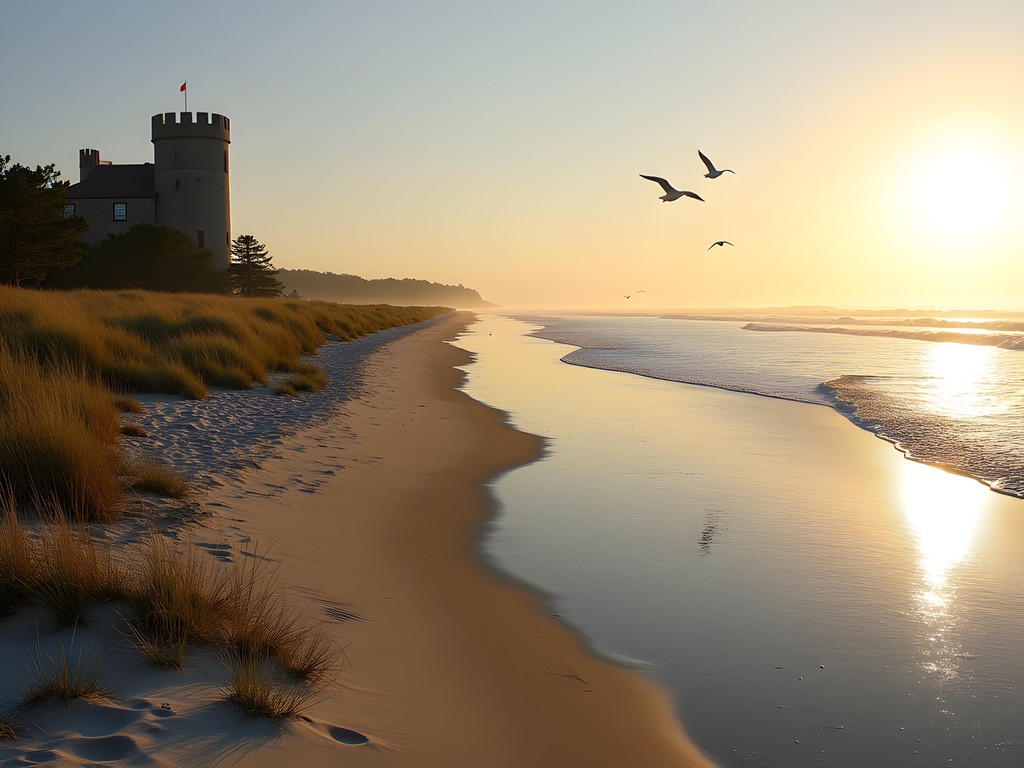
💡 Pro Tips
- Arrive early (before 9 AM) on summer weekends to secure parking near the north beach access
- Pack a lightweight beach shelter as there's limited natural shade
- The $8 entry fee is significantly cheaper than parking at commercial beaches
Cherry Grove Tidal Pools: Nature's Aquariums
The northern end of Myrtle Beach transitions into North Myrtle Beach and eventually Cherry Grove, where one of the coast's most fascinating geological features awaits. During low tide, particularly after a full moon, the Heritage Shores Nature Preserve area reveals extensive tidal pools that transform into natural aquariums.
The phenomenon here is a textbook example of intertidal zone ecology. As a materials engineer who's studied coastal erosion patterns, I can tell you these pools form because of the unique sand composition and gradual slope gradient that characterizes this particular stretch of coastline.
For families with curious children, these pools offer an unparalleled educational experience. My standard equipment for tidal pool exploration includes a waterproof phone case for underwater photography and a mesh collection bucket for temporary creature observation. The biodiversity here is remarkable—hermit crabs, small fish, sea stars, and occasionally even small octopi can be spotted.
Access requires some local knowledge: park at 53rd Avenue North public access, then walk north approximately 400 meters until you see the wooden boardwalk leading to Heritage Shores.

💡 Pro Tips
- Check tide charts before visiting—2 hours before low tide is optimal viewing time
- Wear water shoes with good grip as rocks can be slippery
- Bring a magnifying glass for children to examine tiny sea creatures up close
Waites Island: The Uninhabited Paradise
Few visitors to Myrtle Beach realize there's an entirely undeveloped barrier island accessible just minutes from the northern end of the Grand Strand. Waites Island remains one of the last untouched coastal stretches in South Carolina—a 1,380-acre natural laboratory for coastal ecosystem study and, coincidentally, the perfect escape from summer crowds.
Access requires some effort, which is precisely why it remains pristine. You'll need to either kayak from the Cherry Grove Boat Landing (approximately 20-30 minutes of paddling) or book with one of the few approved tour operators. I've found that inflatable kayaks work surprisingly well for this crossing if you're an experienced paddler and check weather conditions carefully.
The reward for your effort? A beach experience that feels more Caribbean than Carolinian. The shell collecting here is unparalleled—I've found perfect sand dollars, whelks, and even the occasional prehistoric shark tooth. The island's interior features maritime forest and salt marshes where you might spot everything from deer to alligators.
The scientific significance of this island can't be overstated. As one of the few remaining undeveloped barrier islands on the eastern seaboard, it provides crucial data on natural coastal defense systems—something my engineering colleagues and I have studied extensively in relation to climate resilience.
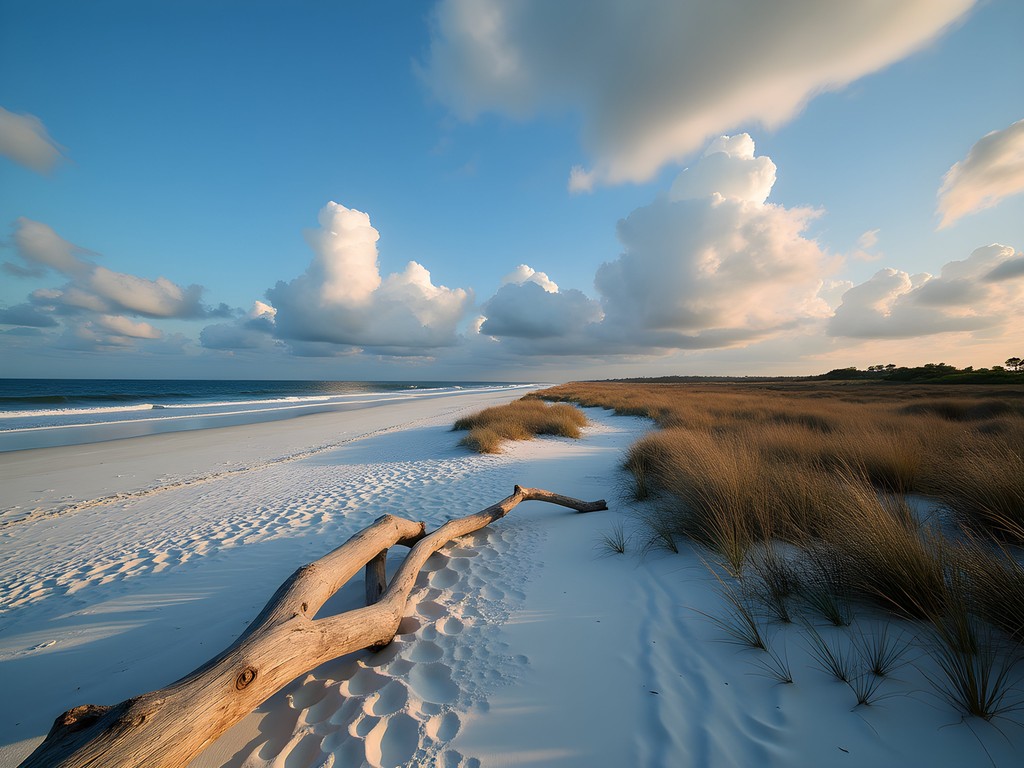
💡 Pro Tips
- Bring sufficient water and supplies as there are no facilities
- Pack out everything you bring in—conservation is critical here
- For safety, always inform someone of your trip plans before heading to the island
Murrells Inlet Salt Marsh: The Kayaker's Dream
While technically not a beach in the traditional sense, the salt marshes of Murrells Inlet offer a coastal experience that rivals any sandy shore. Located about 15 miles south of central Myrtle Beach, this extensive estuary system provides both scientific interest and family adventure.
The salt marsh functions as nature's filtration system—a fascinating example of environmental engineering that I've referenced in several of my materials science lectures. The cordgrass species Spartina alterniflora that dominates the landscape has evolved remarkable salt-filtering capabilities that my engineering colleagues have studied for biomimetic applications.
For families, kayaking these peaceful waters offers an intimate encounter with coastal ecology impossible to experience on crowded beaches. During my last visit, I rented a transparent-bottom kayak from Crazy Sister Marina—an investment that paid dividends when we spotted stingrays, juvenile sharks, and countless fish species directly beneath us.
The dry bag I brought proved essential for protecting my camera equipment and phone. If you're bringing young children, I'd recommend also packing a waterproof picnic blanket for comfortable stops along the small islands and sand bars that appear during low tide.
Access is easiest via Morse Park Landing where affordable kayak rentals are available, though bringing your own equipment is more economical for families.
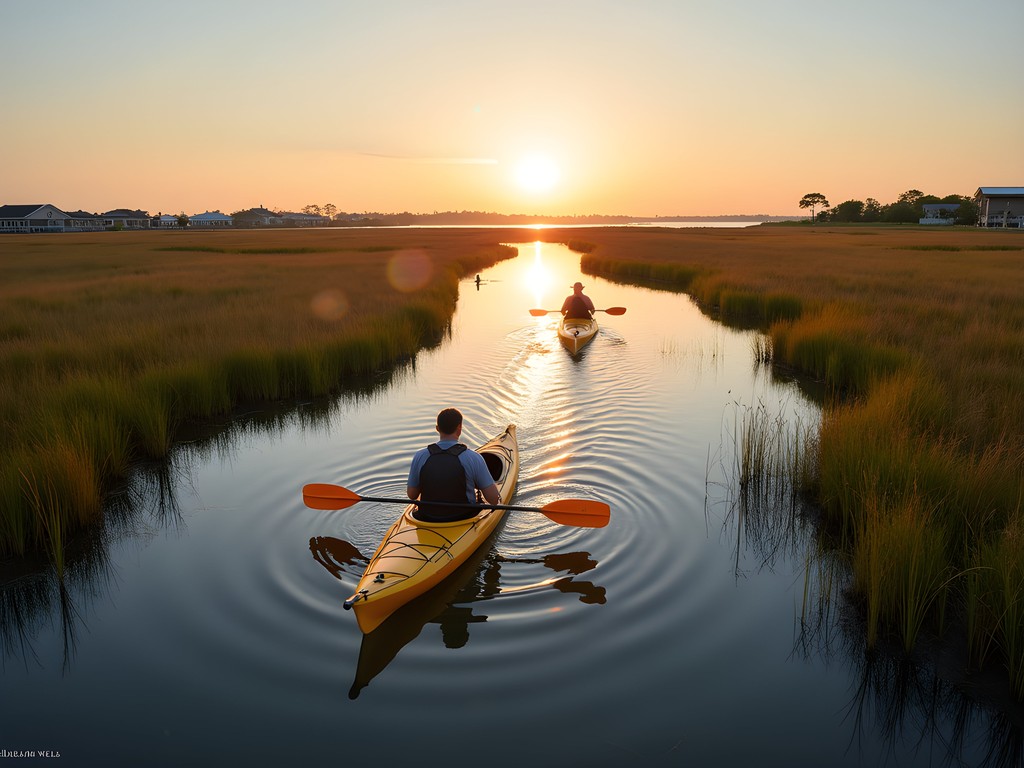
💡 Pro Tips
- Schedule your paddle around low tide when more sand bars are exposed for breaks
- The Marshwalk restaurants provide excellent post-adventure dining, but bringing a picnic saves considerably
- Huntington Beach State Park offers guided marsh tours perfect for first-time kayakers
Pawleys Island Shell Beach: The Collector's Dream
The southernmost gem on my list requires a short drive from central Myrtle Beach, but rewards visitors with what locals call 'Shell Beach'—a stretch of Pawleys Island where unique current patterns deposit an extraordinary variety of intact shells, particularly after storms.
From a materials science perspective, the shell composition here tells a fascinating geological story. The calcium carbonate structures you'll find represent hundreds of marine species, each evolved to withstand specific ocean pressures and predators—nature's perfect example of adaptive material design.
Access this hidden treasure via the public beach access at the southern end of Atlantic Avenue. Arrive at low tide for optimal shell hunting, and bring a mesh shell collecting bag to carry your finds. What makes this location special for families is the gradual slope and typically calm waters of the beach itself, creating safer swimming conditions for children compared to beaches with stronger rip currents.
During my research visits, I've developed a morning ritual: arriving at sunrise with a thermos of coffee to watch dolphin pods that frequently feed just offshore. The early hour not only provides the best shell selection before other collectors arrive but also offers magical lighting conditions that transform the beach into a photographer's paradise.
Like most barrier islands in the region, Pawleys has its share of local legends. Ask longtime residents about the 'Gray Man'—a ghost said to warn islanders of approaching hurricanes—for a taste of local folklore that has persisted for generations.

💡 Pro Tips
- Visit during the first low tide after a storm for the best shell selection
- The nearby Hammock Shops Village offers excellent lunch options when you need a break from the sun
- Bring polarized sunglasses to spot shells in shallow water more easily
Sunset Beach Bird Island Reserve: The Coastal Wilderness
While technically just across the North Carolina border, I'd be remiss not to include Bird Island Reserve in this collection of hidden coastal gems. This 1,300-acre protected area sits at the northernmost tip of the Grand Strand region and offers perhaps the most pristine beach experience within day-trip distance of Myrtle Beach.
What fascinates me as a scientist is the visible coastal succession occurring here—a living textbook of how barrier islands naturally migrate and evolve. The reserve contains every classic coastal ecosystem: maritime forest, salt marsh, tidal creeks, dunes, and beach—all functioning in remarkable ecological harmony.
Access requires a moderate 1-mile walk from the nearest public parking at 40th Street on Sunset Beach, which naturally filters out casual tourists. The effort creates a perfect family adventure with a rewarding destination. During summer months, I recommend bringing a beach wagon to transport your gear, especially if visiting with children.
The island's most famous attraction is the 'Kindred Spirit Mailbox'—a community journal housed in a simple mailbox among the dunes where visitors leave reflections, poems, and wishes. It's become something of a coastal pilgrimage site and offers a fascinating anthropological study in how humans connect with natural places.
Bird Island earned its name honestly—over 260 bird species have been documented here, making it an ornithologist's paradise. Bring a spotting scope if you're interested in observing the remarkable diversity of shorebirds that feed in the tidal flats during low tide.
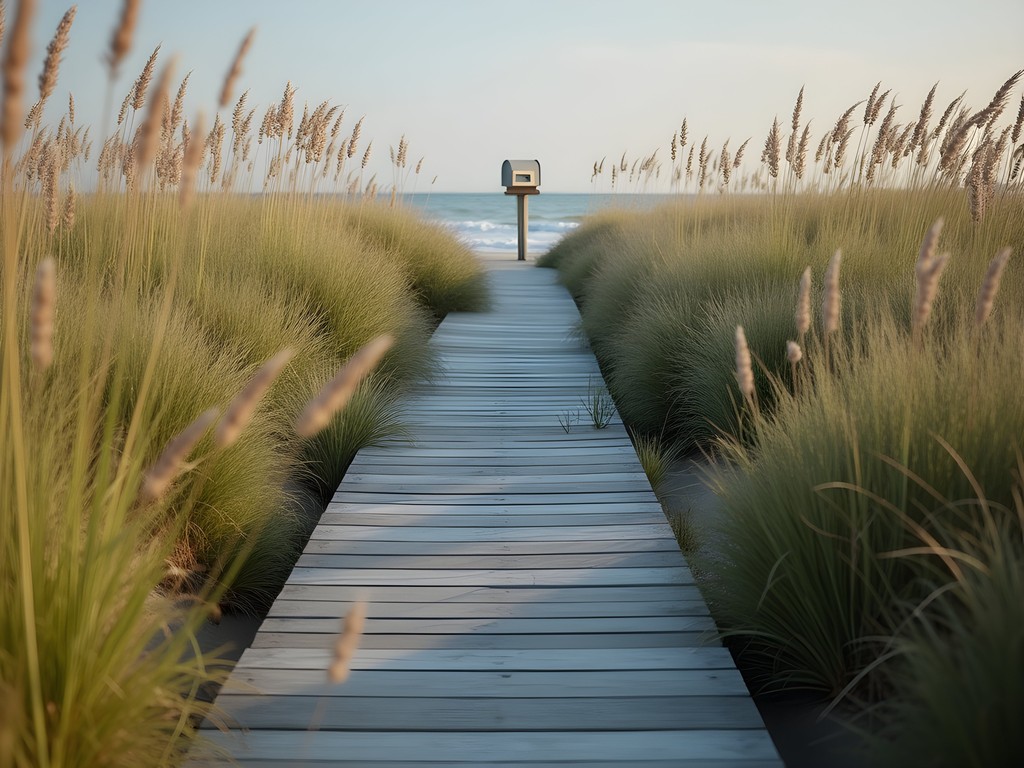
💡 Pro Tips
- Start your walk to Bird Island no later than 3 hours before high tide to avoid getting stranded
- The Mad Inlet area between Sunset Beach and Bird Island can have strong currents—keep children close
- Visit the Kindred Spirit Mailbox and leave your own message—it's a tradition dating back to the 1980s
Hobcaw Barony Beaches: The Historical Coast
Perhaps the most historically significant hidden beaches in the region lie within Hobcaw Barony—a 16,000-acre research reserve and former plantation located just north of Georgetown, about 30 miles south of Myrtle Beach. While primarily known for its historical significance (it once hosted Franklin D. Roosevelt and Winston Churchill), few visitors realize it contains miles of undeveloped beaches accessible only through reserved tours.
As a materials engineer fascinated by historical preservation, I find Hobcaw particularly compelling. The property contains structures dating back to the 1700s that have withstood coastal conditions for centuries—a testament to historical building techniques that modern engineers still study.
Access requires advance planning as you must book a tour through the Hobcaw Barony Discovery Center. The 'Beaches and Barony' tour (offered seasonally) provides the rare opportunity to visit beaches that have remained essentially unchanged for centuries. The insect repellent I always pack proves essential here, as the transition zones between forest and beach can harbor hungry mosquitoes.
For families with older children interested in history, ecology, or simply experiencing a beach that feels like stepping back in time, Hobcaw offers an unparalleled educational experience. The juxtaposition of historical narratives—from indigenous peoples to enslaved communities to America's elite—against the unchanging rhythm of the coast provides powerful perspective.
The beaches here feature extensive oyster beds that have been harvested sustainably for centuries. If you're fortunate enough to visit during a low tide, you'll witness a coastal ecosystem that functions much as it did before European contact.
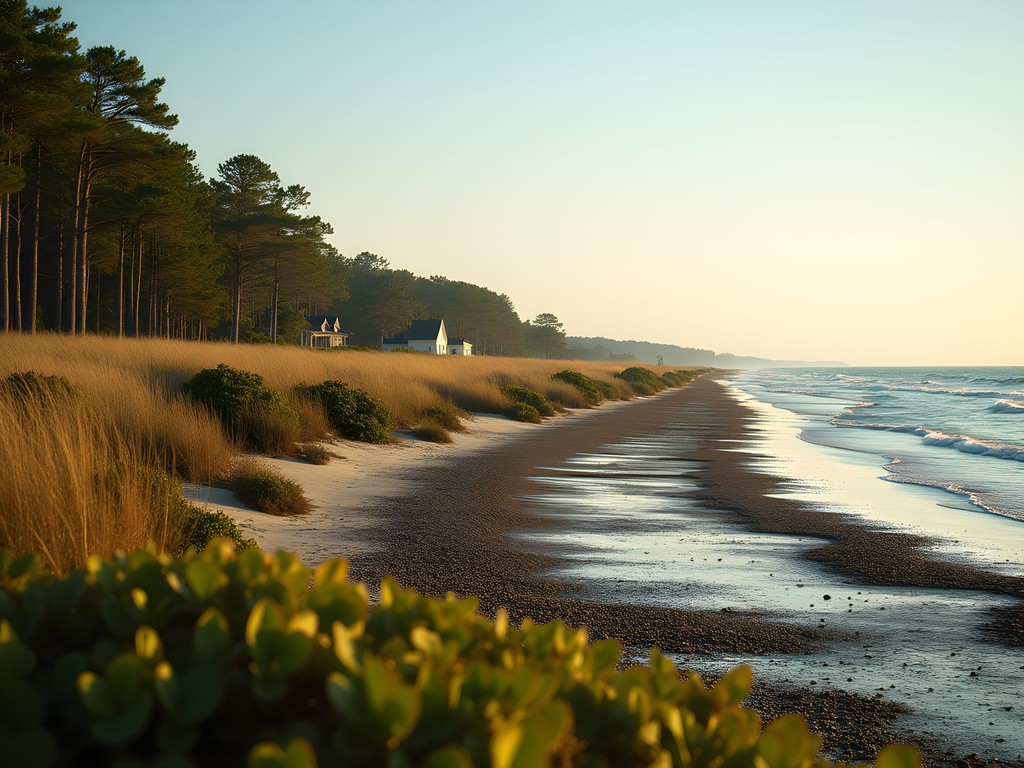
💡 Pro Tips
- Reserve tours at least two weeks in advance during summer months
- The Discovery Center itself is worth a visit even if beach tours are booked
- Combine with a visit to historic Georgetown for a full day of educational exploration
Litchfield Beach: The Local's Secret
Nestled between the more famous Pawleys Island and Huntington Beach State Park lies Litchfield Beach—what locals consider the perfect balance between accessibility and seclusion. Unlike the previous entries that require significant effort to reach, Litchfield offers public access points while somehow maintaining a distinctly uncrowded atmosphere even during peak summer months.
The engineering aspect that fascinates me about Litchfield involves its dune system. While many South Carolina beaches have lost natural dunes to development or erosion, Litchfield maintains an impressive primary dune line that provides crucial storm protection. The community has implemented thoughtful preservation measures that serve as a model for sustainable coastal development.
For families, the appeal lies in the wide, flat beach with gradual slope—ideal for children—combined with amenities within easy reach. The northern section near Litchfield By The Sea offers the most privacy, accessible via the public access point at Litchfield Beach Road.
During my research visits, I've developed a particular appreciation for the tidal creek that cuts through the beach near its southern end. This dynamic water feature creates a natural children's pool during low tide and serves as a fascinating microecosystem for impromptu science lessons. My sand-resistant beach blanket has proven invaluable for comfortable creek-side observation sessions.
For lunch, skip the tourist restaurants and head to Pawleys Island General Store for their famous chicken salad sandwiches—a local institution that costs half what you'd pay at beachfront establishments. Enjoy your meal picnic-style on the beach for the authentic local experience.

💡 Pro Tips
- Park at Litchfield Beach Road public access before 10 AM for easiest parking
- The beach is most secluded north of the public access point—walk 10 minutes for significantly fewer people
- Rent bikes to explore the extensive network of shaded paths connecting the beach to nearby dining options
Waties Island Beach: The Academic's Retreat
Not to be confused with the similarly named Waites Island mentioned earlier, Waties Island represents a unique coastal treasure: a barrier island owned and protected by Coastal Carolina University primarily for research purposes. As someone who has collaborated with university research teams on erosion studies, I've had the privilege of accessing this remarkable living laboratory.
The scientific significance of Waties Island cannot be overstated. As an undeveloped barrier island, it provides crucial baseline data on natural coastal processes increasingly rare along developed coastlines. The university's stewardship has created what amounts to a coastal time capsule—a glimpse of what the entire Grand Strand looked like centuries ago.
While general public access is limited, families can experience this hidden gem through scheduled educational programs run by CCU's marine science department. These programs, typically offered monthly during summer, provide guided exploration of the island's diverse ecosystems. For the scientifically curious family, this educational access offers far more value than simply finding another swimming beach.
During university-led excursions, I recommend bringing a waterproof notebook for recording observations. The island features remarkable examples of maritime forest, salt marsh, dunes, and beach in close proximity—perfect for comparing different coastal ecosystems.
For those unable to join official university programs, the northern end of Cherry Grove Beach offers distant views of Waties Island. Bring a monocular telescope for observing the island's abundant bird life from a respectful distance.
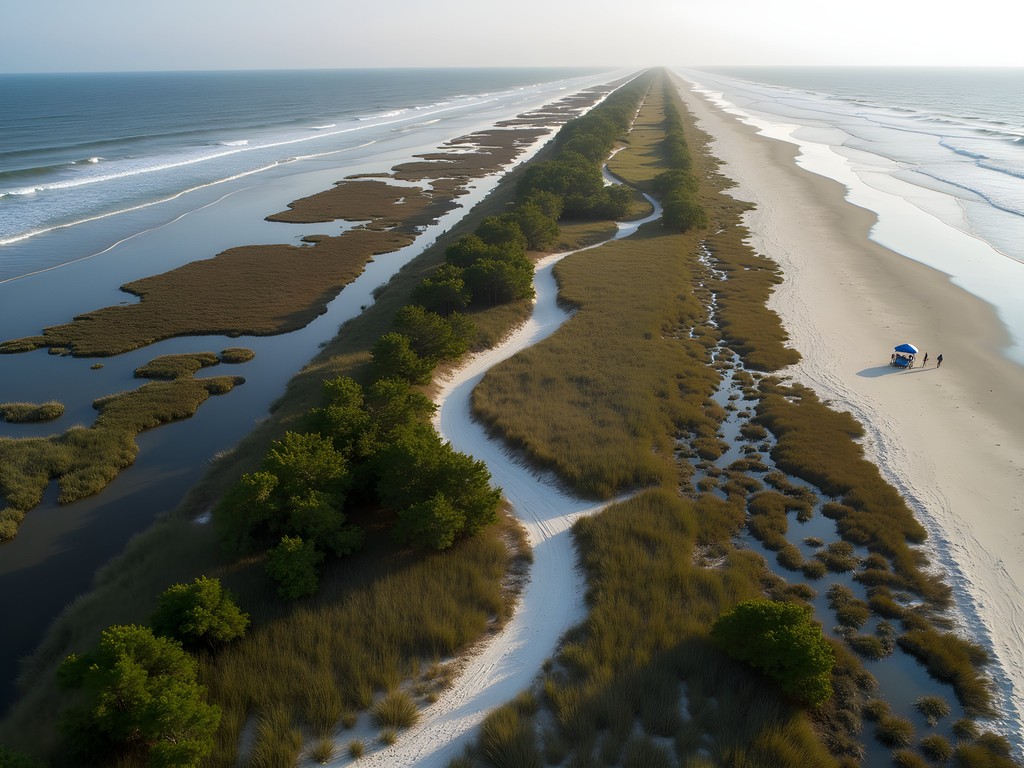
💡 Pro Tips
- Contact Coastal Carolina University's marine science department for public program schedules
- Programs fill quickly—register at least one month in advance
- Prepare for a primitive experience with no facilities—pack accordingly
Surfside Beach Tidepools: The Family-Friendly Discovery Zone
While Surfside Beach itself hardly qualifies as 'hidden,' most visitors completely overlook the remarkable tidepools that form at its southern end during low tide. Located at the border between Surfside and Garden City beaches, this area represents a perfect compromise for families seeking natural exploration without venturing far from conveniences.
The geological formation creating these pools fascinates my engineer's mind. A subtle offshore sandbar creates a natural breakwater that, during retreating tides, traps seawater in a series of shallow, sun-warmed pools perfect for young children to explore safely. The water clarity here often surpasses other Grand Strand beaches due to the natural filtration that occurs as waves pass over the sandbar.
Access is straightforward via the public beach access at Surfside Pier, followed by a 10-minute walk south toward Garden City. Time your visit to coincide with the outgoing tide for maximum tidepool formation. A tide timing watch has proven invaluable for my coastal explorations, eliminating the need to constantly check tide tables.
For families, the combination of safe swimming conditions, fascinating marine microhabitats, and nearby amenities makes this location particularly valuable. The sand castle kit I brought for my colleague's children was a huge hit—the damp sand near tidepools provides perfect building material for elaborate structures.
Unlike truly remote beaches, Surfside offers the security of lifeguards and easy access to restrooms, food, and shade—practical considerations that matter when exploring with young children. The compromise of some additional people nearby is often worth the convenience for families with small children or those new to beach exploration.

💡 Pro Tips
- Visit 1-2 hours after high tide as waters recede for best tidepool formation
- The area between 13th and 16th Avenue South access points typically has the best pools
- Bring water shoes for comfortable exploration of the sometimes rocky pool areas
Final Thoughts
These ten secret beach spots around Myrtle Beach represent the perfect antidote to the commercial oceanfront that dominates tourism brochures. As a materials engineer who's spent considerable time studying coastal ecosystems, I'm continually amazed by how these hidden havens preserve both natural processes and authentic experiences just minutes from high-rise hotels and crowded boardwalks.
What makes these locations special isn't just their relative seclusion, but how they connect visitors to the fundamental coastal processes that shaped this region over millennia. From the research-protected shores of Waties Island to the historically significant coastline of Hobcaw Barony, each offers a window into different aspects of coastal ecology and human interaction with these dynamic environments.
For families especially, these alternatives to the main strand provide safer swimming conditions, educational opportunities, and memories unburdened by commercial distractions. The joy of watching children discover their first perfect sand dollar at Pawleys Island or observe fiddler crabs in Murrells Inlet creates connections to nature that far outlast the temporary thrills of beachfront amusements.
I encourage you to venture beyond the boardwalk on your next Myrtle Beach vacation. Pack your sense of adventure, respect these fragile ecosystems, and discover the authentic Carolina coast that continues to thrive in these protected pockets of paradise.
✨ Key Takeaways
- The most pristine beaches require some extra effort to reach, but reward visitors with uncrowded shores and intact ecosystems
- Early morning visits (before 9 AM) dramatically improve experiences at all hidden beaches
- Combining beach exploration with educational opportunities creates more meaningful family vacation memories
- Proper tide timing is essential for experiencing the best features of many secret beach spots
- Supporting conservation efforts helps ensure these hidden gems remain pristine for future generations
📋 Practical Information
Best Time to Visit
May-June and September (fewer crowds, warm water)
Budget Estimate
$500-700 for a weekend family trip (accommodations, food, activities)
Recommended Duration
3-4 days minimum to explore multiple hidden beaches
Difficulty Level
Easy To Moderate (Some Locations Require Walking)

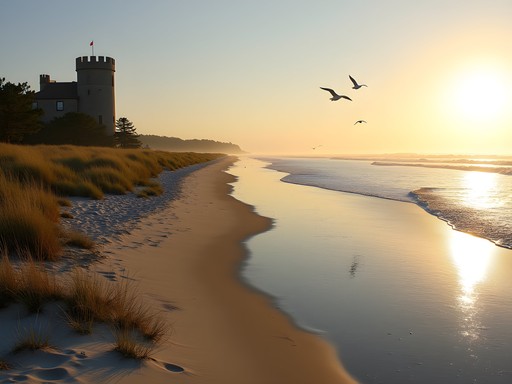
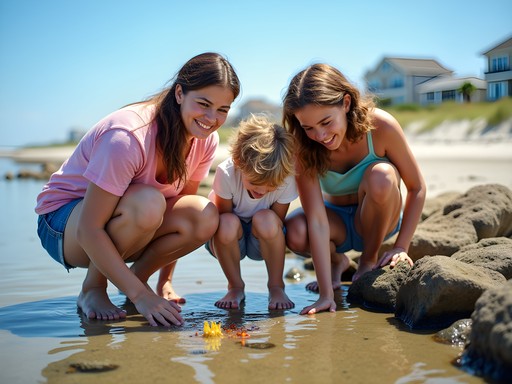

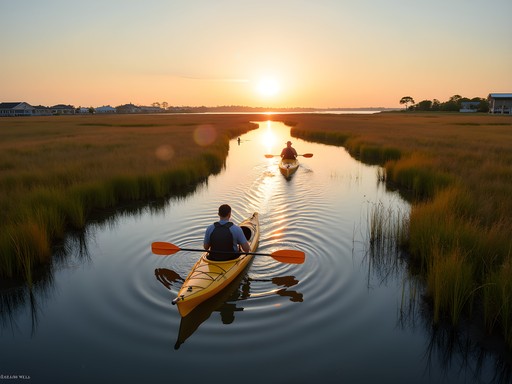
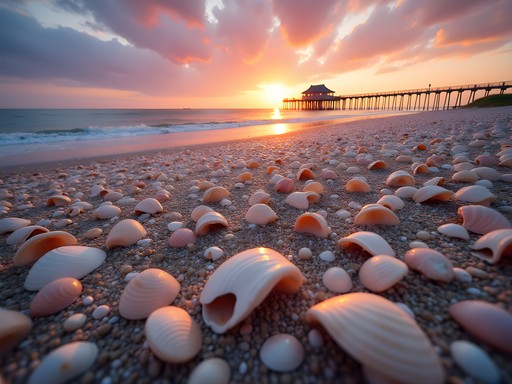
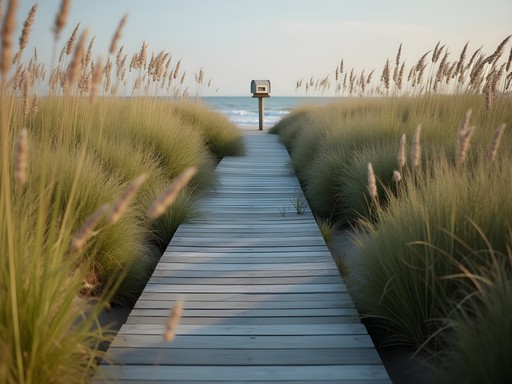



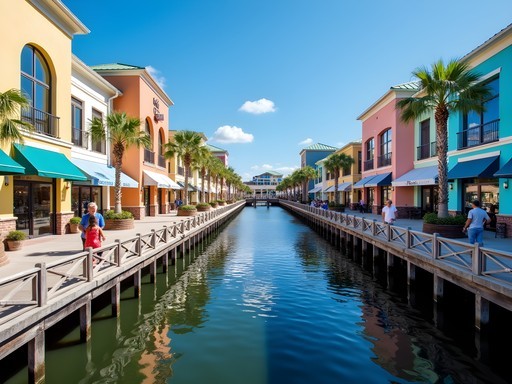
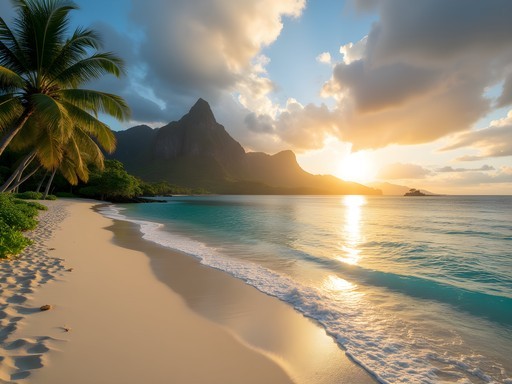

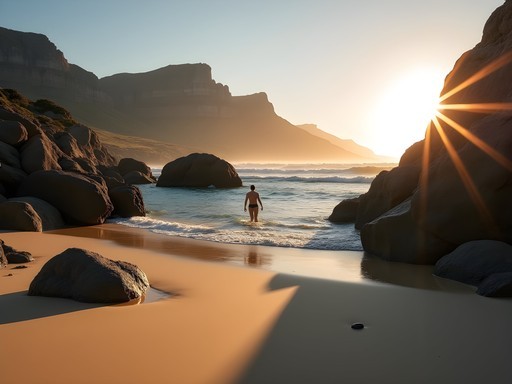
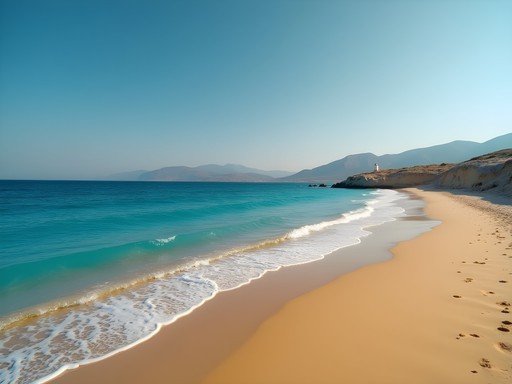
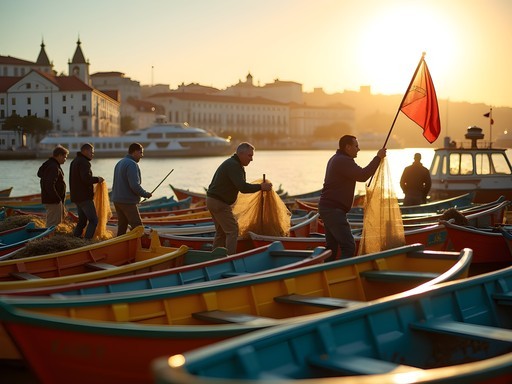

Comments
Ana Robinson
William, your post brought back wonderful memories! We discovered Huntington Beach State Park last year when our family vacation to Myrtle Beach needed a break from the crowds. My 8-year-old twins still talk about the castle ruins at Atalaya - they pretended to be knights defending it from sea monsters! We spent hours exploring the tidal pools with their little plastic magnifying glasses, naming every tiny crab they found. The ranger-led turtle walk was magical too - seeing those tiny hatchlings make their way to the ocean under moonlight brought tears to my eyes. For families reading this: pack extra snacks and water as the facilities are limited compared to the main beaches, and the gift shop has limited hours off-season. Worth every minute of the extra drive time.
wildqueen
The turtle walks are amazing! If you come back, try to catch the ghost crab walks they do in late summer too. Your kids would love it!
Sarah Powell
As someone who's explored coastlines worldwide, I find William's engineering perspective on these beach formations particularly fascinating. I'd add that the geological contrast between the developed main beach and these natural areas tells an important conservation story. I spent three days exploring Huntington Beach State Park last year, analyzing how the protected dune systems there function compared to more developed stretches. The biodiversity difference is striking. For solo travelers concerned about safety: these areas are generally well-patrolled, but I recommend bringing plenty of water, sun protection, and letting someone know your plans when visiting the more remote spots like Waites Island. The tidal changes can be dramatic, especially for those unfamiliar with Atlantic coast patterns.
summerrider
Just got back from Myrtle Beach and tried the salt marsh kayaking. Incredible sunset views!
wildqueen
As a Myrtle Beach local for 15+ years, I'm actually surprised you found Waites Island! That's our local secret spot and not many tourists know about it. A word of caution though - access can be tricky depending on the tide, and you need to be respectful of private property around there. I'd add Little River Neck to this list - incredible views of Bird Island and fewer people know about it. If you're into shelling, go after a storm at low tide. The beach combing is incredible! William, thanks for highlighting these spots while also emphasizing conservation. Too many travel blogs bring crowds without the respect message.
coolbackpacker
Just got back from Huntington Beach State Park and WOW! The bird watching there is incredible - spotted over 30 species in one morning. The causeway William mentioned is definitely the prime spot. We also explored the Atalaya Castle which was a fascinating bonus. Pro tip: if you're serious about wildlife viewing, bring a good pair of binoculars - total game changer for spotting those herons and egrets in the marsh areas!
escapehero
Murrells Inlet is the BEST! We did kayaking there last summer and saw dolphins!!! 🐬
nomadking
No way! What time of day did you go? We missed the dolphins 😭
escapehero
We went around sunset! The tour guide said that's when they're most active. Try Captain Mike's kayak tours next time!
Kimberly Murphy
William, this is EXACTLY the kind of content I love! I'm heading to Myrtle Beach in November (bit of an off-season adventure) and I'm thrilled to discover these hidden gems. As someone who's constantly trying to escape the tourist traps, your engineer's eye for detail is refreshing. Quick question - do any of these spots have particularly interesting geological features that might not be immediately obvious to the casual observer? I'm fascinated by coastal formation processes and would love to know what to look for!
William Wells
Kimberly, November is actually perfect - fewer crowds and the light is beautiful! For geological features, check out the exposed coquina rock formations at Huntington Beach State Park during low tide. They're ancient shellfish beds compressed over thousands of years. Also, the way Waites Island shifts seasonally shows fascinating coastal dynamics in action.
Adam Nichols
William, excellent structural analysis of Myrtle Beach's lesser-known coastal formations. I particularly appreciate your insights on the Cherry Grove Tidal Pools. The geological composition there creates a fascinating microecosystem that's remarkably resilient despite coastal erosion patterns. During my visit last spring, I documented how the pools' calcium carbonate deposits differ significantly from similar formations along the eastern seaboard. One suggestion I'd add: visitors should consider bringing a field guide to identify the unique marine specimens. The ecological diversity between these ten locations follows a distinct pattern that correlates perfectly with your observations about human impact gradients.
coffeequeen
Are these spots still relatively uncrowded even during peak season? Planning a trip for next summer and trying to avoid the masses.
Sarah Powell
I've visited most of these spots in July (peak season) and they're definitely less crowded than the main beaches, but timing matters. Huntington Beach State Park gets busy on weekends but is manageable on weekdays. Waites Island stays relatively quiet year-round due to the access limitations. Murrells Inlet is best very early morning during summer to avoid both crowds and afternoon heat.
backpackwalker
Saved! Going to Myrtle Beach next month!
William Wells
Hope you enjoy these spots! October is actually perfect timing - fewer tourists and the weather is still great.
backpackwalker
Thanks! Any specific time of day best for Waites Island?
William Wells
Early morning is magical - fewer people and better wildlife viewing. Just check the tide charts before you go!
Venture X
Premium card with 2X miles, $300 travel credit, Priority Pass